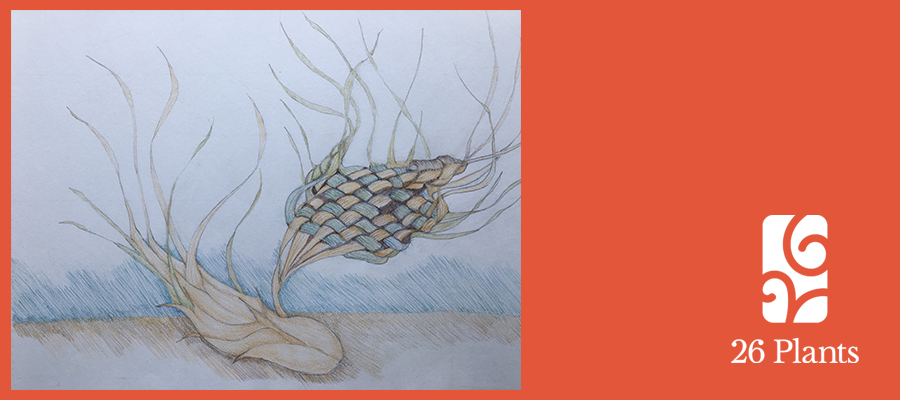Pīngao / Golden Sand Sedge
Ficinus Spiralis
Paul White, New Zealand

On the boundary
Sand dunes watch for the ocean
coming home each morning.
Golden sand sedge waves
a welcome back at night
but there will be no kiss.
Jealous of the seagrass
is this dotterel’s nesting place,
and covetous of the driftwood’s sea embrace.
Demurely Pīngao knits her brows
though waves thrash angrily at her feet.
Bound by ropes, she feels tides tear
and drag grains from her grasp.
Standing her shifting ground
she has become a lonely border guard
marching the length of the beach
under a full moon’s search light
praying there’ll be nothing to report
on this sand dune’s watch
Not quite buried treasure
Every sandy beach in New Zealand was once crowded with pīngao (ping-ow). Long before I knew its name, I came across it on Waiheke Island, a 40-minute ferry ride from where I live in Auckland. New Zealand dotterels were nesting among the sand dunes at Whakanewha (far-can-eh-far) reserve. I thought then that it was just a version of marram grass. It isn’t, it’s way more interesting, and it turns out that marram grass has been largely responsible for the fact that pīngao is officially now “at risk and declining”.
Pīngao only grows in Aotearoa New Zealand. Māori consider it to be ‘taonga’ or treasure, and yes, that is because of its golden colour. But it’s not because of any resemblance to gold itself. Māori weavers use only four native plants in their work and pīngao is the only one they don’t need to dye. They use natural golden pīngao to contrast with black, brown and red-coloured flaxes. Most importantly, pīngao features in the woven tukutuku panels on which the legends of each tribe (iwi) are portrayed inside the marae (meeting house).
Not surprisingly, there are legends about pīngao itself. One says that the spirits of the dead drop pīngao along the path to the underworld to mark the route.
Pīngao is also known as ‘Tane’s eyebrows’ from the legendary story of the war between Tangaroa, lord of the ocean, and his brother Tane (tar-nay), lord of the forest. Tane tore out his eyebrows as a peace offering for his brother. But Tangaroa refused it and threw them onto the shore.
In another legend Pīngao was a seaweed that fell in love with handsome Toetoe (toy-toy), a pampas-like grass on the shore. She crawled across the hot sand only to discover that Toetoe was a complete narcissist, who rejected her. Stranded on sand dunes, Pīngao cried out to Tangaroa; all he could do was shower her with sea spray to comfort her.
Pīngao grows closer to the shoreline than any other sand binding plant, but only slowly, which is why European settlers burned much of it and replanted rampant marram. A big mistake, because native birds, like dotterels, and threatened insects, like katipo spiders, prefer pīngao to marram. And, unlike marram, pīngao stabilises dunes without taking over.
Europeans also brought the deer, rabbits, boots and 4WDs that destroy pīngao. Good news: pīngao is now being cultivated specially for weaving.
Image by Kate Cattell
